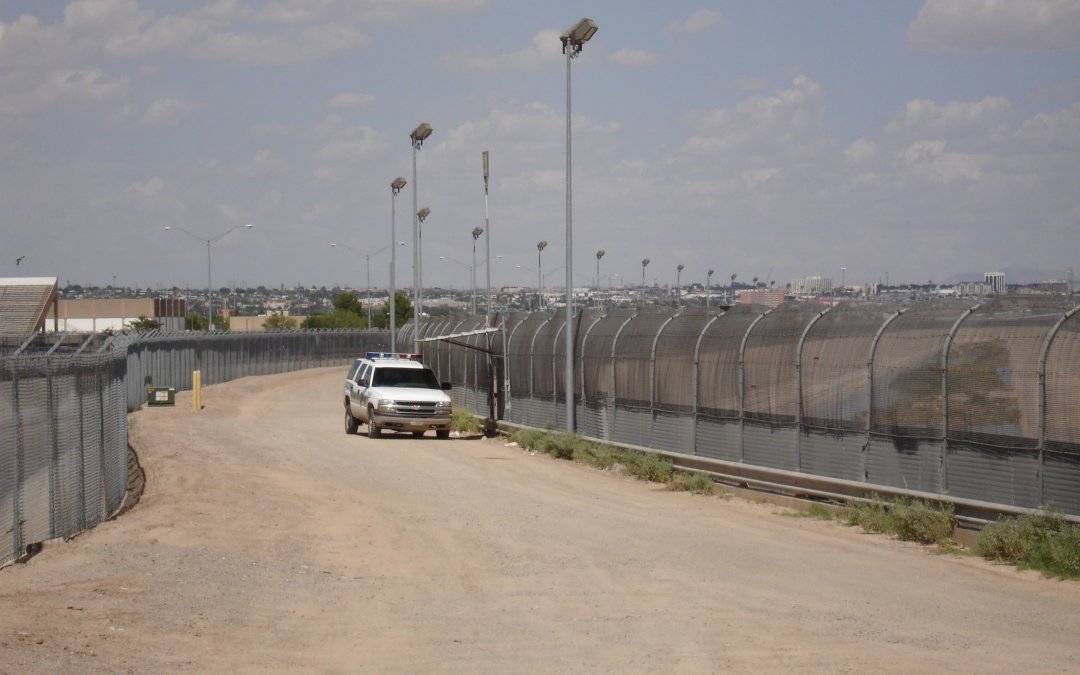WASHINGTON — For South Texas communities, the southern border is not a political tool making headlines but a feature of citizens’ everyday lives.
South Texas boasts some of the most predominantly Hispanic counties in the state, and has a continuous exchange with their neighbors in northern Mexico. According to Starr County resident and County Democratic Chair Jessica Vera-Rios, it is common for South Texans to cross the border to visit family, receive health care and buy everyday products at a lower cost.
“Business-wise, I had some teacher friends go over there to buy flowers that they were going to need for school events. Just simple flowers were cheaper to get in Mexico,” Vera-Rios said.
Her experience contrasts with Republican presidential candidate Donald Trump’s escalating rhetoric of chaos and invasion at the southern border throughout his campaign, leaving long-time residents frustrated at the media coverage of immigration.
“I live within a few miles of the [Rio Grande] river, and I’ve never had anyone break into my home,” Vera-Rios said. “I feel that sometimes it’s sensationalized on the news.”
Vera-Rios’ experience is just one of the many South Texas residents who feel the rhetoric of national candidates is disconnected from reality.
The rising anti-immigrant sentiment in national campaigns has been a catalyst for undercurrents of immigration restrictionism in the region. But the trend isn’t driven by ‘migrant crime,’ as Trump suggests. Instead, government involvement at the border and new patterns of migration have caused a local immigration debate, according to bordertown residents.
“There’s such a disconnect, unfortunately, with the rhetoric and the media picture that we see communicated to Americans versus the reality on the ground,” Álvaro Corral, a political science professor at the University of Texas Rio Grande Valley, said.
Corral added South Texas has been a consistent Democratic stronghold for generations due to their courting of Latino voters since the 1960s.
However, the South Texan constituency has a socially conservative streak compared to other Democrats. Many of the area’s Latino voters, who are predominantly of Mexican descent, have retained traditional tenets of Mexico’s Catholic culture.
“For the most part, a lot of us are Catholic [or] have Catholic backgrounds. Most of us are pro-life, and I think that’s what drives our conservatism,” Hidalgo County resident Alma Pérez said.
Pérez, who is also the Public Relations Committee Chair for the Hidalgo County Republican Party, said that the rising conservative resistance in South Texas is not an “awakening,” but has been present all along.
Immigration attitudes have grown more conservative due to the government’s involvement in border security within local communities.
For officers along the border, the strain of the job and the processing of large populations has taken a great toll on their mental health, according to Pérez.
“It affects your border patrol agents. There has been an increase in suicide rates in their areas. It affects the way our border patrol families live and our law enforcement officers,” Pérez said.
Another issue for some border residents is the scarcity of goods that comes with the demand of maintaining immigration camps nearby.
Pastor Jorge Tovar, Vice Chair of the Webb County Republican Party, said he’d periodically see empty shelves at his local grocery store because officials were buying essentials for these camps “by the pallet” and causing consumers to panic.
“Some people walk in and see empty shelves, not knowing what’s going on. So they panic and start buying everything essential to them, so the shelves become empty,” Tovar said.
Experts in the area also observe a greater disconnect between established Mexican Americans in border communities and more recent waves of migrants coming in from Central and South America, leading to more restrictionist sentiments.
“It’s potentially easier for some Latinos of Mexican descent in the [Rio Grande] Valley to separate themselves culturally and ethnically from contemporary migrants,” Corral said.
While many residents acknowledge they need more infrastructure and patrol agents on the border, Sylvia Bruni, a Laredo resident, said they face no threat from their proximity to the border or from incoming migrants.
Bruni, who is also the Democratic Chair for Webb County, said that Laredo’s ranking as one of America’s safest cities disproves Trump’s vision of a chaotic and dangerous border region.
“I know we’re one of the safest cities in the United States. Why, if we’ve got ‘rapists and murderers’ crossing the river?” Bruni said.
Concerns of migrants bringing crime and drugs into the United States are unfounded,
Bruni added. Instead, she said she’s concerned about the Trump campaign’s rhetoric against immigrants and Latinos.
Bruni said the criminalization of immigrants in national politics is worrying, given the multicultural community in places like Laredo.
“It just makes me wonder what’s happened to my America because that’s not how I grew up,” Bruni said.
Vera-Rios, who has lived in South Texas for almost her entire life, said that recent immigrants have not posed the great criminal threat that is depicted by politicians in the media.
“Yes, we have immigrants that come in. Yes, there’s like a rare occurrence of someone trying to seek refuge and breaking into a home. But the way the media portrays it is far from the truth,” Vera-Rios said.


